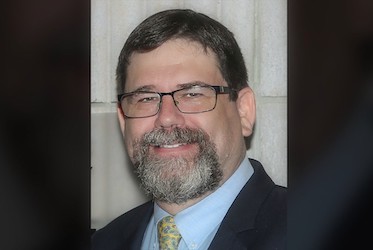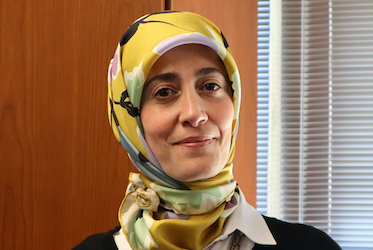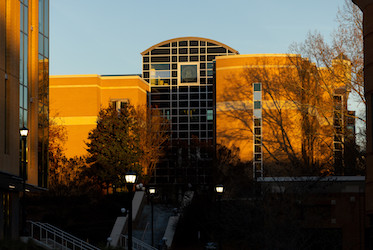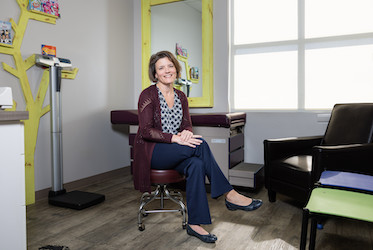
Thinking outside the box
MARIETTA, Ga. | Jun 8, 2017
Collaboration creates community center for Haiti

For a group of local high school students and the Kennesaw State engineering students helping them, a unique design-build-transfer project will soon serve the humanitarian needs of a country devastated by natural disasters, deforestation and poverty.
Pre-engineering and pre-architecture students at Marietta High School, with the guidance of Kennesaw State students and professors, industry professionals and organizational leaders, are gaining hands-on STEM experience in sustainable design and technologies.
The Haiti Container Building Project began three years ago as a mission to provide sustainable technology and equipment for a community center in Haiti’s Plaine de L’Arbre, a small northwestern mountainous region on the island.
Using repurposed cargo shipping containers, which are abundant in Haiti, as the main building blocks, students are creating the multi-purpose center with a health clinic, vocational classrooms and community meeting space. The 8-foot-by-40-foot hollow containers will be stacked two high, and two sets will rest parallel to one another, connected by a covered atrium space. The converted containers will have interior lighting, living space for visiting medical staff and workshop space.
Kennesaw State engineering students Porshia Hayden and Cecil Abidoye are just two of a handful of KSU students who volunteer weekly to help the high schoolers create dozens of innovative solutions and sustainable designs for technologies in areas such as satellite communications, green energy, rainwater harvesting, aquaponics and solar cooking.
“There are so many levels of how this project will impact communities,” said Hayden, a civil engineering student. The project attempts to tackle the bigger issues in Haiti such as lack of access to healthcare and education, but specifically explores how to create a sustainable space with the region’s limited resources, such as wood, transportation and electricity.

Project Beginnings
The collaborative, multi-year project began in 2013 as the brainchild of Leon Grant, the high school’s pre-engineering and pre-architecture teacher. Grant turned for help to Marcellus Pitts, the CEO of Pitts-Fowler Enterprises Inc., who participated in several humanitarian missions to Haiti and wanted to aid the country’s rebuilding. Grant, Pitts and Marietta Monaghan, a co-mentor for the school’s pre-architecture program and a lecturer in architecture at Kennesaw State, brainstormed how to best help the people of Plaine de l’Arbre, and settled on the multipurpose community center idea.
The high school students soon began to research, design and construct sustainable technologies and green buildings during the club’s afterschool program, taking into account some of Haiti’s greatest problems: lack of electricity, water and sanitation issues, nutrition and food preparation difficulties, and few roads.
Grant soon realized that the STEM students would need additional educational partners who could assist them in the engineering and architectural design projects.
As a graduate of the Southern Polytechnic State University, Grant turned to Kennesaw State, knowing exactly what the university’s Marietta Campus could offer. Kennesaw State is one of 16 partners in the Haiti Container Building Project.
Project Expertise
Inspired by the project, several Kennesaw State engineering faculty and students began meeting with the high school’s pre-engineering club members. Ted Grosch, assistant professor of electrical engineering, learned about the program from Grant in 2013 and now mentors students on solar power, internet communications and computer systems.
“We are generating all of the community center’s needs with solar and wind power,” Grosch said. “With no internet or cell service, and not a lot of infrastructure in Haiti, we are looking at connectivity solutions.”
According to Kennesaw State architecture lecturer Marietta Monaghan, her role is to “help students keep an eye on the big picture while researching and making improvements to their initial designs.” She mentors student about architectural design and sustainable construction methods.
“Each student has a part of the project as the designer, and everyone must work together in a collaborative environment, much like an architecture, engineering and construction firm,” Monaghan said.
Muhamad Jallow, a Marietta High School sophomore, is developing a weather station using Raspberry Pi, a tiny computer used for programming. The weather station will collect and store weather data such as temperature, barometric pressure, rainfall, relative humidity, wind speed and direction. Size limitations restricted his station to a 4x4-foot design, so Jallow sketched his idea and transferred it to Solidworks software to design his creation.
In addition to conceptualizing the design, Jallow said that the project “teaches us a work schedule.” Students involved are expected to stay after school twice a week and on some weekends.
Jallow manages the team’s prototype laboratory, which houses a plasma laser cutter and 3D printer, and each of the 25 high school after school research team members creates components of the large-scale project.
In addition to being sustainable and using as much recycled materials as possible, making the systems highly efficient and cost-effective is vital, Grant said.
Marietta High School junior Zion Martell is working on the community center’s aquaponics system. The center’s atrium roof, which connects the two spaces, will serve as a rain harvesting roof to collect rainwater for the aquaponics tank.
“I’m researching the plants and fish that mutually benefit each other,” she said. “The fish produce ammonia as a byproduct which help the plants thrive, and I’m exploring what types of fish would be most efficient and cost-effective in producing the highest plant yields of leafy vegetables.”
Students initially researched best practices and innovative ideas from organizations around the world to expand and improve on their creative works, such as a playground that grinds corn while children play.
According to Grant, the students spend a bulk of their time working on multiple iterations of redesign and testing their systems. The students create designs but also learn software and research fabrication costs to make the entire project sustainable, Grant added.
Abidoye, a Kennesaw State mechatronics major, began working on the Haiti Container Project when it first launched four years ago, while he attended Marietta High School. As a graduate of Grant’s program, he hopes to follow through until the final stage next year when the technology is transferred to Haiti.
“I’m so impressed with the students’ designs so far,” said Abidoye, who gained confidence to pursue engineering in college because of his involvement with the container project.
The six Google-donated containers, once fully equipped with the students’ designs and prototypes, will remain on the Marietta High School campus and serve as the Engineering & Architecture Research Laboratory for Sustainability (EARLS Lab), a sustainable technology test bed. Future K-12 students will learn to expand and improve on these sustainable technologies through the EARLS Lab.
The team plans to share design plans and transfer the sustainable technology to Haiti and other developing nations. Grosch added that this project is a “springboard for smaller sites all over the world.”
Developing the Engineering Pipeline
In addition to fulfilling a humanitarian need, the Haiti Container Building Project is also fulfilling the shortage of future STEM professionals, explained Grant.
“I want this project to excite and introduce students to engineering and architecture,” Grant said. The project merges science, technology, engineering, math and architecture. “We want this program to create an engineering pipeline from the K-12 schools to the universities and then to industry.
“There is strength in collaboration, and we are also involving our middle school and elementary school students in greenhouse agriculture and solar cooking,” said Grant.
Hayden, who has been working with the high school students for the past three years, said she hopes the hands-on approach for this project interests more students to join STEM fields. As a college student, she is gaining significant experience through her involvement with the project.
“I am helping the high school students learn the engineering process, but I’m also learning project management and site development,” Hayden said. “This project is my motivation.”
– Tiffany Capuano
Photos by Lauren Lopez de Azua
Related Stories
A leader in innovative teaching and learning, Kennesaw State University offers undergraduate, graduate and doctoral degrees to its more than 45,000 students. Kennesaw State is a member of the University System of Georgia with 11 academic colleges. The university’s vibrant campus culture, diverse population, strong global ties and entrepreneurial spirit draw students from throughout the country and the world. Kennesaw State is a Carnegie-designated doctoral research institution (R2), placing it among an elite group of only 7 percent of U.S. colleges and universities with an R1 or R2 status. For more information, visit kennesaw.edu.



















